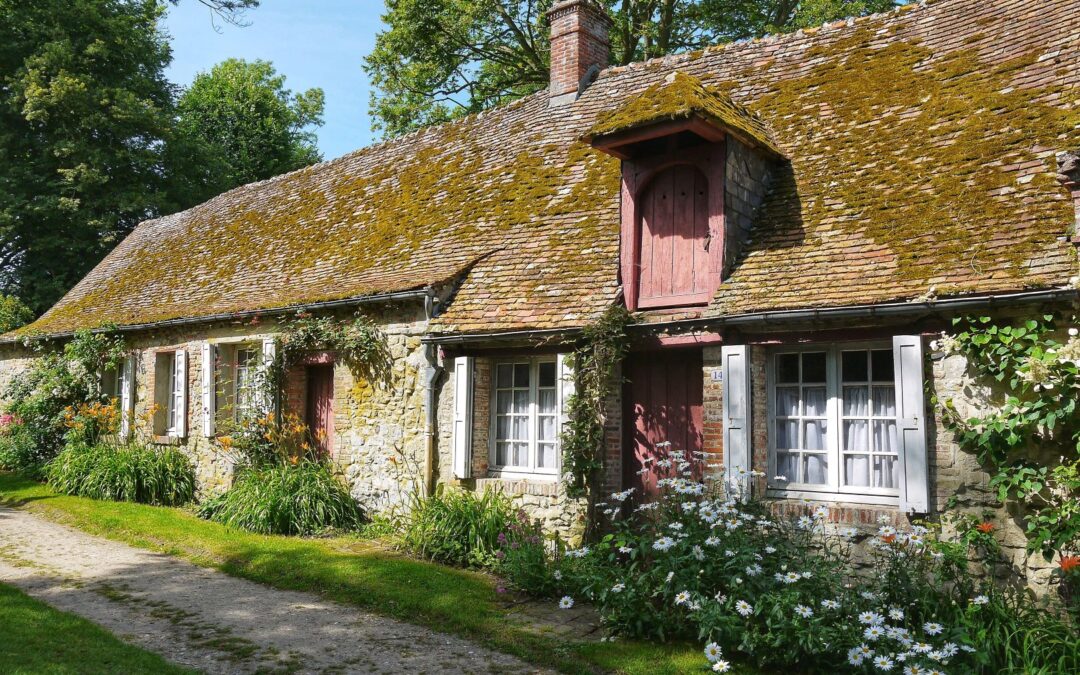A new year is upon us, which means dusting off our crystal ball and finding out what the professionals think the next 12 months hold for the property market.
Here, OnTheMarket shares some forecasts for 2020 – and beyond…
House price predictions post Brexit
Not that you could have missed it, but the political landscape shifted once again at the end of 2019 with December’s general election, a resounding Conservative majority and a government determination to “get Brexit done”.
Knight Frank says the result should take away some uncertainty and, in the short-term, “pave the way for the release of some of the pent-up demand that has built in recent years”. But, adds Tom Bill, Head of London Residential Research, with a hint of caution: “The risk of a no-deal has not completely disappeared”.
That said, Knight Frank predicts “rising momentum across all markets” on the completion of a Brexit deal, set to be reflected in price growth from 2021.
Savills, meanwhile, anticipates both “election-related angst” and Brexit will continue “to act as a drag on the market” nationally in the short-term. It is also worth noting that the agent’s forecasts are based on an assumption that the UK “ultimately achieves an orderly exit from the EU” over 2020, among other factors.
Yorkshire-based Edward Hartshorne, Managing Director at Blenkin & Co, is positive in his new year outlook. He says: “Looking ahead, all the early indicators suggest that the strong levels of trading in 2019 will continue into 2020 at least within the middle and upper echelons of the market and especially now that a number of political certainties have been delivered.”
He adds: “Those homeowners who have been paralysed into inaction over the last few years may well emerge, persuaded by greater political clarity, low interest rates, a shortage of stock and high profile/high quality sales activity.”
Interest rates
Knight Frank predicts that interest rates are “likely to begin a gradual process of normalisation in 2020”. That, it says, “could mark the end of a period of ultra-low mortgage rates” and put the financial squeeze on some buyers.
That said, Knight Frank projects that rates will be low “compared to long-term norms” by 2024, citing economist predictions of under 2% by 2023.
Property prices
In its Housing Forecast 2020, the Royal Institution of Chartered Surveyors (RICS) has predicted that there will be “little change in sales volumes for the year ahead, despite the new certainty around Brexit.”
It anticipates a “modest” 2% house price rise across the UK in 2020. That’s set against the backdrop of 2019 and what the RICS outlines as a stock shortage, a drop in new properties being put on the market due to seller caution and “stretched affordability” in some areas of the country.
Knight Frank’s UK-wide price growth expectation for 2020 is in line with the RICS, at 2%. It is also forecasting a cumulative 15% increase in prices from 2020 to 2024. Savills is similarly predicting a 15.3% increase in average house prices over the same period.
House price forecast by region
Compared to other areas of the UK, Knight Frank is expecting “slightly” stronger growth between 2020 and 2024 in the South East and East of England.
Savills, meanwhile, predicts the North will outperform the South across the UK housing market, with the North West having the strongest price growth over the five-year period. “We anticipate a continuation of trends seen historically, where London and the South East underperform markets in the Midlands and North,” says Lucian Cook, Savills head of residential research.
“This stage of the cycle appears to have begun in 2016, coinciding with the referendum, when London hit up against the limits of affordability.”
Markets further away from London, he says, took longer to bounce back after the financial crisis and “have much greater capacity for house price growth relative to incomes”.
“The affluent market towns of North Yorkshire and the East Riding will continue to attract buyers,” says Edward Hartshorne, “their many amenities attracting cash-rich downsizers and empty nesters who are failing to find appropriate stock in the city of York.”
He adds: “We shall see family buyers with familial links increasingly returning north from London and the South East, lured by excellent schooling options, affordable and appealing housing stock, and a better quality of life.”
While Savills predicts significant growth in the north of the country, the agent also expects prices in prime Central London to increase 3% in 2020, and 20.5% growth in the next five years. It also envisages a robust performance from Wales (18%) and Scotland (20%) from 2020-2024.
Property consultancy Galbraith says the Scottish market “remained remarkably solid with encouraging activity at all levels throughout 2019”. By way of example, it highlights sales figures for the Castle Douglas and Kelso offices as being up year-on-year 20% and 77% respectively in Q3, the last there are full figures for.
Galbraith’s head of residential sales, Simon Brown, says that trends seen in 2019 are likely to continue into the new year. “In 2019, we have seen plenty of buyers waiting for fresh stock to come to market and, while there has been a steady stream of properties launched, demand still outstrips supply.”
He adds: “The market in both Scotland and the North of England continues to be robust and we have a healthy list of genuine buyers waiting for the right property.”
Meanwhile, Ben Thomas, owner of SA Property estate agents in Swansea, says he has seen a steady rise in local house prices and that the market has been “quite stable”. He predicts that despite recent political events, and if interest rates stay as they are, 2020 will remain similarly steady. He explains: “I can see more of the same with a continued slow burn.”
Predictions for the rental market
The UK lettings market in 2019 has been a challenging year for agents. The year saw the introduction of the Tenant Fees Act, an outflow of private landlords and a severe shortage of new instructions, with supply nowhere near matching demand. This imbalance between supply and demand looks set to continue.
The RICS expects rents to “rise further, and at a faster pace” in 2020. “As the sector continues to struggle with a lack of supply, the RICS survey data suggests rents will rise by 2.5%,” it says. “In fact, the number of new landlord instructions has been stuck in negative territory for 14 successive quarters, which is the longest run since 1999. In London, rents are expected to rise at an even faster pace of 3%.”
Meanwhile, David Cox, Chief Executive of ARLA Propertymark, highlights what he believes needs to be done in the sector. “Now that the election has brought some political stability, tenants will likely be looking for properties again and the new government must recognise the importance of making the market attractive for both tenants and landlords,” he says.
“They must be very careful about reforming Section 21 which could cause supply to plummet, and if it is to be abolished, Section 8 must be reformed first and a new specialist housing tribunal created. Without this, supply will almost certainly fall which will have the consequential effect of raising rents.”
Knight Frank forecasts the UK rental market to grow steadily over the next five years, to the tune of 10%. Savills expects average rents to go up 13.1% in the same period.






